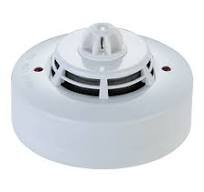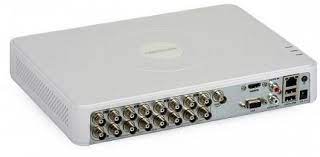A fire alarm sensor is a crucial component of any fire detection system, playing a vital role in ensuring the safety of occupants in residential, commercial, and industrial buildings. These sensors are designed to detect the presence of smoke, heat, or flames, triggering an alarm to alert individuals of a potential fire emergency.
There are different types of fire alarm sensors available in the market, each serving a specific purpose in detecting fires. Smoke detectors are among the most common type of fire alarm sensor and work by sensing smoke particles in the air. When smoke is detected, the sensor activates the alarm system, notifying occupants to evacuate the premises immediately.
Heat detectors are another type of fire alarm sensor that responds to changes in temperature rather than smoke. These sensors are ideal for areas where smoke detectors may not be suitable, such as kitchens or garages where smoke from cooking or exhaust fumes can trigger false alarms.
Flame detectors are specialized sensors designed to detect the presence of flames by responding to specific wavelengths of light emitted by fires. These sensors are often used in environments where traditional smoke or heat detectors may not be effective, such as areas with high levels of dust or moisture.
Fire alarm sensors play a critical role in early fire detection and can help prevent property damage and save lives. It is essential to ensure that these sensors are properly installed, regularly maintained, and tested to ensure they function correctly when needed. Investing in a reliable fire alarm system with quality sensors can provide peace of mind knowing that you have taken necessary steps to protect your building and its occupants from the devastating effects of fires.
5 Essential Tips for Maintaining an Effective Fire Alarm Sensor System
- Ensure the fire alarm sensor is installed at a strategic location where it can detect smoke or heat easily.
- Regularly test the fire alarm sensor to make sure it is functioning properly.
- Keep the area around the fire alarm sensor clear of dust and debris to prevent false alarms.
- Replace the batteries in wireless fire alarm sensors as needed to maintain their effectiveness.
- In case of a false alarm, investigate the cause promptly to prevent unnecessary panic or disruptions.
Ensure the fire alarm sensor is installed at a strategic location where it can detect smoke or heat easily.
Ensuring that the fire alarm sensor is installed at a strategic location where it can detect smoke or heat easily is crucial for the effective operation of the fire detection system. Placing the sensor in areas with a high risk of fire, such as kitchens, near electrical panels, or in hallways, can help ensure early detection and timely response in the event of a fire emergency. By positioning the sensor in a strategic location, you increase the chances of detecting smoke or heat quickly, allowing for prompt activation of the alarm system and swift evacuation procedures to protect lives and property.
Regularly test the fire alarm sensor to make sure it is functioning properly.
Regularly testing the fire alarm sensor is a crucial step in ensuring the safety and effectiveness of your fire detection system. By conducting routine tests, you can verify that the sensor is functioning correctly and will activate the alarm in the event of a fire emergency. This proactive approach helps to identify any potential issues or malfunctions early on, allowing for prompt maintenance or repairs to be carried out. Ultimately, regular testing of the fire alarm sensor can provide peace of mind knowing that your building is equipped with a reliable system that can alert occupants to evacuate safely in case of a fire.
Keep the area around the fire alarm sensor clear of dust and debris to prevent false alarms.
It is crucial to keep the area around the fire alarm sensor clear of dust and debris to prevent false alarms. Accumulated dust and debris can interfere with the sensor’s ability to detect smoke, heat, or flames accurately, leading to unnecessary alarms that can disrupt occupants and emergency responders. Regularly cleaning and maintaining the area around the fire alarm sensor not only ensures its optimal performance but also enhances the overall effectiveness of the fire detection system in promptly alerting individuals to potential fire hazards.
Replace the batteries in wireless fire alarm sensors as needed to maintain their effectiveness.
It is crucial to replace the batteries in wireless fire alarm sensors as needed to ensure their continued effectiveness in detecting and alerting individuals to potential fire emergencies. Regularly checking and replacing the batteries in these sensors is essential for maintaining their operational reliability and ensuring that they can function properly when required. By staying proactive in monitoring and replacing batteries as needed, you can help safeguard your property and the safety of occupants by ensuring that the fire alarm system remains fully operational at all times.
In case of a false alarm, investigate the cause promptly to prevent unnecessary panic or disruptions.
It is crucial to promptly investigate the cause of a false alarm triggered by a fire alarm sensor to prevent unnecessary panic or disruptions. False alarms can lead to confusion and anxiety among occupants, as well as potential disruptions to daily activities. By conducting a thorough investigation into the root cause of the false alarm, such as dust accumulation or sensor malfunction, building management can address the issue promptly and prevent future false alarms. This proactive approach not only helps maintain a sense of safety and security within the premises but also ensures that the fire alarm system remains reliable and effective in detecting real emergencies.




